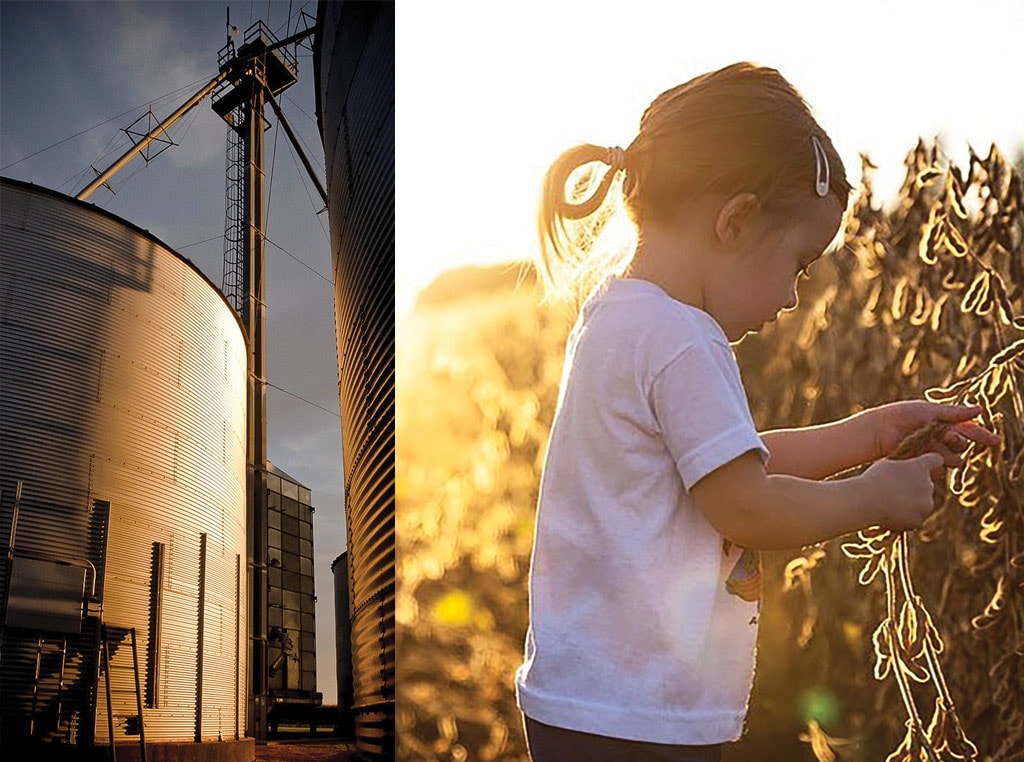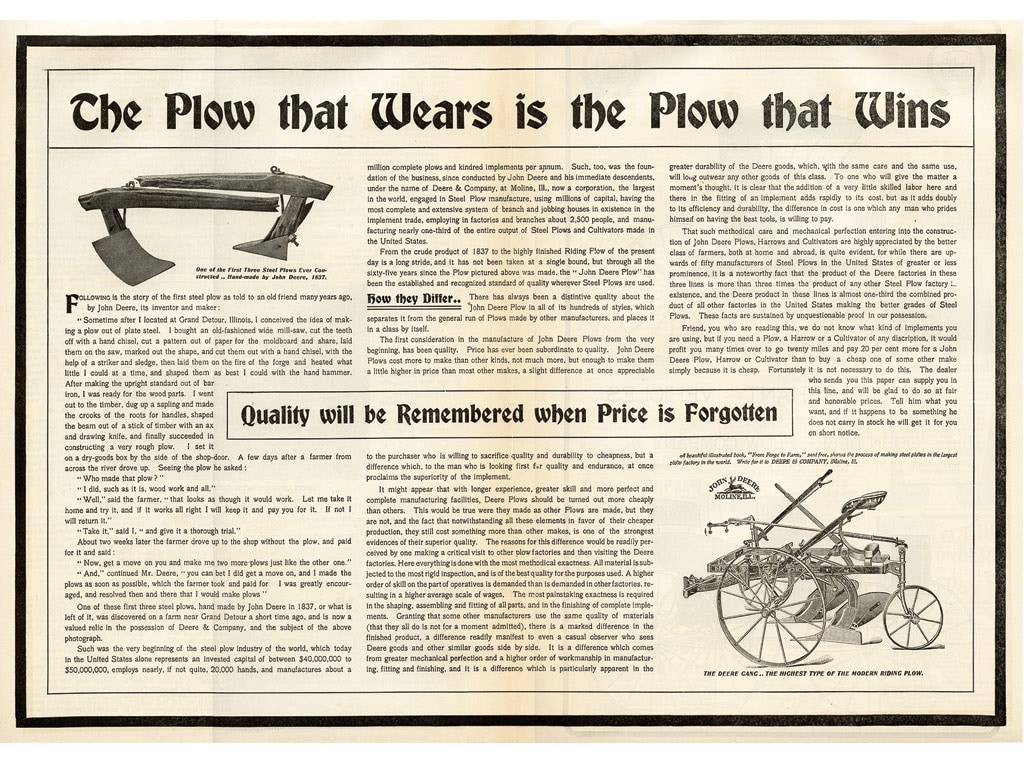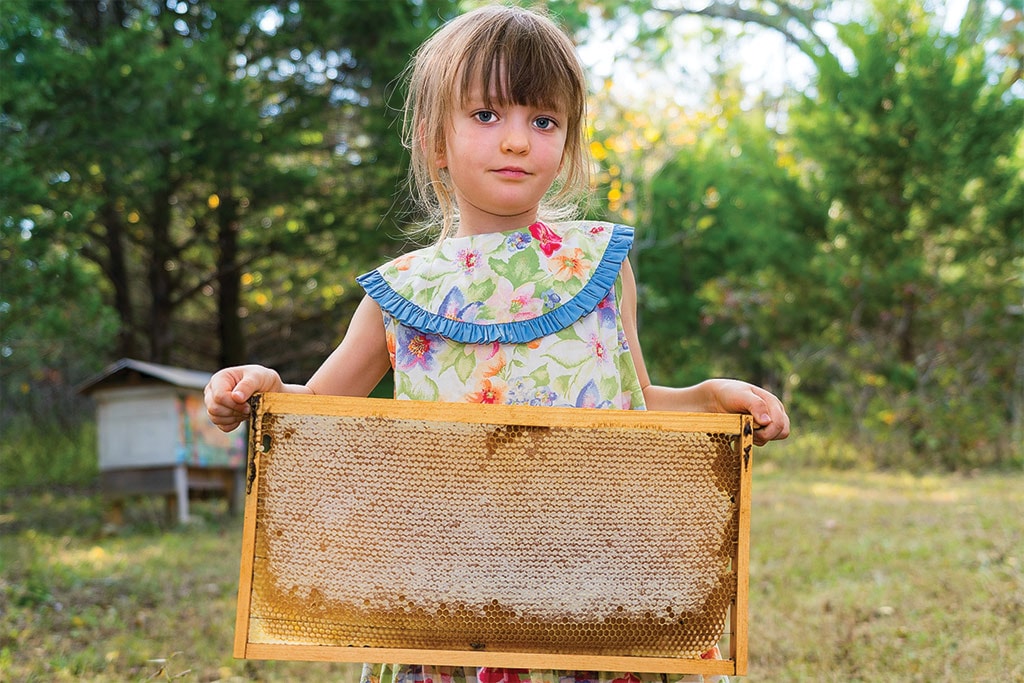
Agriculture January 01, 2021
Following a Tangled Path
From grain bins to Big Ben and back.

Growing up, I could see our grain bins from my bedroom window. In contrast, I could see Big Ben from my window while in University of London. But, nothing beats helping my niece, Madison, count beans.
Some twenty years ago I was a farm girl who was going to be an eye doctor. But instead, I found ag communications by way of an FFA career development event.
My ag teacher saw something in me I hadn’t yet and put me in the Ag Sales – Advertising contest. He was definitely on to something: I won the state level three times.
When I chose to major in Ag Com, my biology teacher thought I was crazy, but I was perceptive enough by then to know I understood science well but needed to study how to deliver information effectively to an audience.
Thankfully, this has been the right path. But like most, it has not been a straight shot. It has been a lot of back and forth, literally.
Home. I grew up in Illinois’ smallest county, where all but one community has fewer than 1,000 people and you have to leave to find most services.
My mom thought I would be the first of her kids to come back to the farm after college. Instead, I kept moving farther away, even across the ocean to London at one point.
I needed to be in the city to develop my career. I was working in advertising agencies, and the city is where the offices are. That’s where my colleagues were.
As my career took me from one Midwestern city to the next, three things were constant: my faith, my allegiance to often-losing Chicago and Illinois sports teams, and my connection to my family’s farm.
My mom, just like my ag teacher, was on to something. My favorite days on the job have always been on a farm, whosever it may be. And with each new and exciting move I have felt a stronger pull back to the farm.
At one point I even negotiated time in the spring and fall to work from home (and by home I meant the buddy seat) so I could stay grounded. I often feel I live two lives because of how deeply connected I am to my family’s farm and how much I enjoy my life in the city. The farm still feels like home, yet so does the block I live on in Minneapolis. My work is rooted at the farm, yet living in different cities has given me so many amazing opportunities.
My ways of operating are based on how the farm operates, yet the city’s diversity has shaped my critical thinking and strengthened my empathy. It’s a weird dichotomy.
Tangled in between. Not until I started freelancing in 2016 and was no longer tied to a cubicle and predetermined vacation days did this dichotomy become noticeably tangled in my mind.
My grandfather asked me at that point why I still lived six hours away. I told him it was kind of like how he and my grandmother moved 50 miles away from his family’s farm in the 1940s to start their own (That, and I like snow).
I’m still that farm girl. I need to leave the city bubble at least every 14 days or else I get stir-crazy. I need to see with my own eyes how the crops are maturing. But spending time in the city makes me appreciate the changes and the challenges of the farm. It makes me ask different questions. It broadens my perspective.
Growing up on a farm and moving to the city—to work in agriculture—at the exact time when the public becomes more interested in where their food comes from makes it even more interesting. As I write the first draft of this essay, I am preparing to head home for harvest. I moved from the buddy seat to the driver’s seat a few years ago, so I will bounce between the grain cart and the dryer with my cameras hanging off my shoulders the whole time. My preschool-aged nieces and I will vie for who asks “why” more as my mind buzzes with story and project ideas. And I will feel happy and content spending time with my family.
But when this hits your mailboxes, I will be back in Minneapolis moonlighting as a ski instructor at the local hill (if COVID-19 allows) and soaking up the city’s offerings.
My mind will be buzzing once again with story and project ideas, but inspired from the end- consumer’s perspective.
I don’t know; maybe instead of being tangled in between two lives, it’s that I live the best of both worlds?
The whole picture. What does this all have to do with The Furrow? The ‘yin and yang’ in my life give me a unique perspective. It gives me the outsider’s perspective with an insider’s knowledge, whether it be within the ag industry or in the farmer/consumer dialogue.
Being a photojournalist then gives me the skills to piece it together and opportunity to explain it to others. I’ve published stories in The Furrow for a small blip in the magazine’s history. When I came on board, the editor at the time gave me a guide written in 1964(!). Other than it being addressed only to “Gentlemen” (cringe), the factors for what makes a good Furrow story are still quite similar. You know this already—it is all about people who are doing interesting things in agriculture. It is a dream to find those individuals and to spend time on their farms learning how life in their small corner of the world compares with others, and them sharing their stories with you. As you read more of my stories and see more of my photographs, you will notice I naturally gravitate to writing about the whys more than the hows and try to capture the emotion of the story in my photographs. This is because no matter where you call home or what you raise, these are the elements that cross over.
Who knew (other than my ag teacher) that my career would be helping people by filtering information through the mechanical eye of my camera rather than looking into their eyes as their doctor?
Read More

Agriculture
Plowing A Straight Furrow
For 125 years, The Furrow has been documenting the ebb and flow of farm life.

Agriculture
Faces of The Furrow
For 125 years, The Furrow has told the story of agriculture, and the stories of agriculture.
